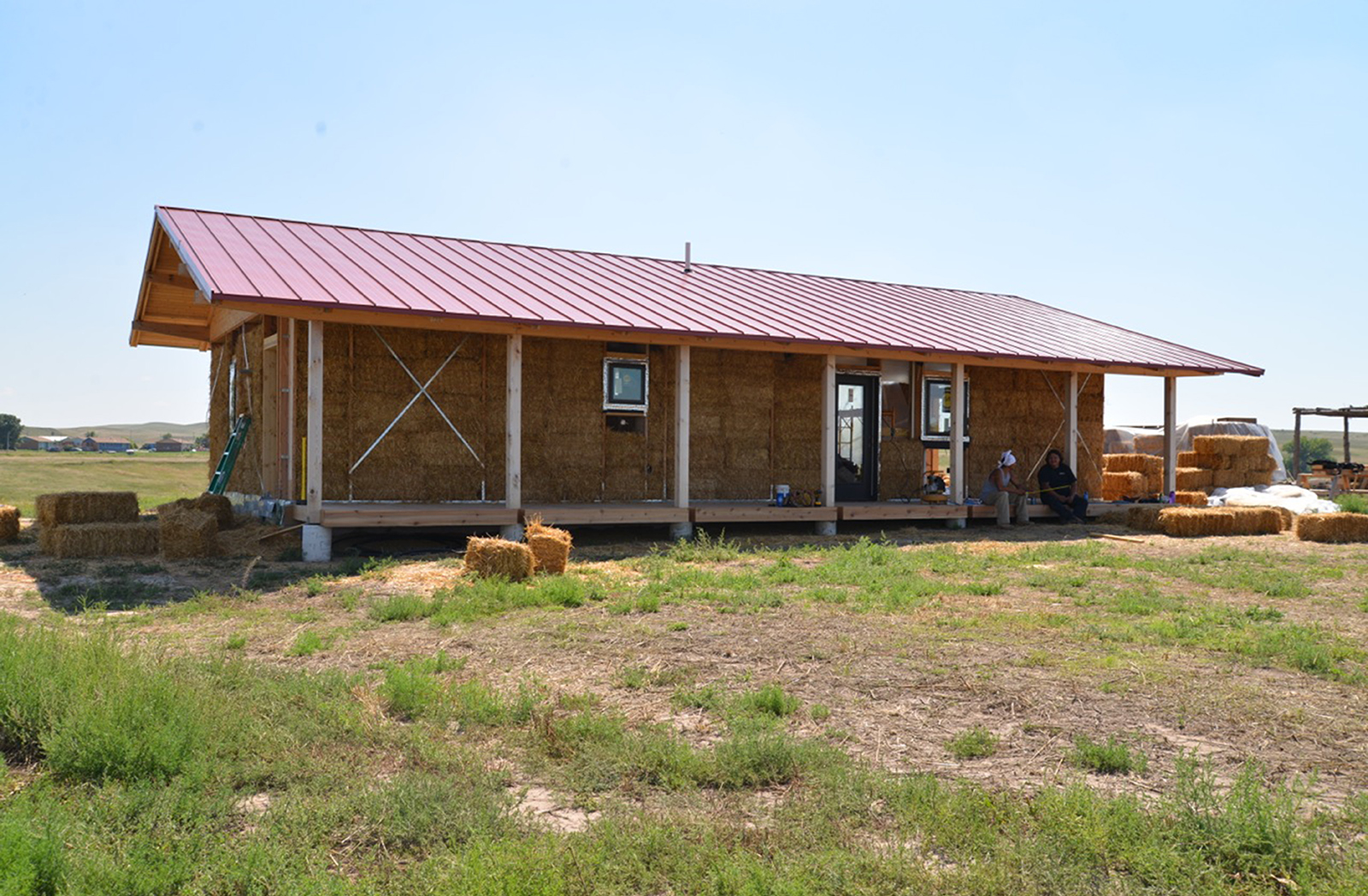2025 Frankenthaler Climate Initiative awardee
We are thrilled to learn the Waniyetu Wowapi (Winter Count) Art & Culture Institute (WWACI) designed by Ferguson Pyatt was selected as a 2025 Frankenthaler Climate Initiative awardee, providing crucial support for the Cheyenne River Youth Project’s upcoming arts and culture center in collaboration with Environment & Culture Partners and RMI.
The Waniyetu Wowapi (Winter Count) Art & Culture Institute (WWACI) will be the first net-zero building on the Cheyenne River Reservation. The building intends to reduce energy consumption and greenhouse gas emissions by using geothermal heating and cooling in conjunction with Solar PV to achieve net-zero energy for the building and offset energy use, resulting in substantial cost savings and an improved environmental impact compared to traditional HVAC systems.
NASHI receives a Special Mention in the Architizer A+ Awards for Architecture +Humanitarianism
Native American Sustainable Housing Initiative. has been selected as a Special Mention in the Architizer A+ Awards for Architecture +Humanitarianism. This award celebrates those projects and architects that use their skills and passions to bring vital hope to communities in need.

Native American Sustainable Housing Intiative Finalist for the Architizer A+ Popular Choice Award.
We’re an A+Awards finalist - and you can help us become a winner! Vote for our project The Native American Sustainable Housing Initiative in the Plus Categories | Concepts: Architecture +Self Initiated Projects here The online public chooses theArchitizer A+ Popular Choice Award and public voting is open from Marc 15th to April 1st.

Rob Pyatt & NASHI Receive HUD Research Grant
Rob Pyatt and NASHI Receive HUD Research Grant
A University of Colorado Boulder (CU) service-learning program, funded by HUD's Office of Policy Development and Research (PD&R), is bringing stakeholders and students together to offer the Oglala Lakota Nation viable models of sustainable, energy-efficient housing. The Oglala Lakota of the Pine Ridge Indian reservation in South Dakota face some daunting odds. Located in the second poorest per capita county in the United States, the Pine Ridge reservation is also one of the largest reservations at 2.1 million acres. Recently, the executive director of the Oglala Sioux Housing Authority observed that the reservation had 1,100 houses, but needs 4,000.
Despite these challenges, Rob Pyatt, director of the Native American Sustainable Housing Initiative (NASHI), has found a resilient culture. “Lakota culture is based on the idea of sustainability, and a deep respect for the natural environment,” he said in describing the values that tribal members brought to the service-learning program Designing for People and Place: Sustainable & Affordable Housing for the Pine Ridge Indian Reservation.
Last spring, CU students and faculty in the Program in Environmental Design collaborated with the Oglala Lakota College and the South Dakota School of Mines and Technology to conduct design charrettes with Pine Ridge residents and design four homes — each featuring different construction materials and methods. The housing design emphasizes energy efficiency in sustainable materials, as an alternative to the conventional wood-frame houses found throughout Pine Ridge. The homes are designed to be net-zero energy (producing more energy over the course of a year than they use) through cost-effective passive strategies like natural ventilation and passive solar orientation combined with more expensive active renewable energy systems, such as photovoltaic panels, solar thermal hot water, and wind turbines. All four homes were designed using the LEED for Homes rating system criteria.
The first model house, a straw-bale construction, got underway this past summer. The three other models are expected to be built using structural insulated panels, optimized wood frame, and compressed earth block.
Rob Pyatt and NASHI Win the National ACSA/AIA Housing Design Education Award
Rob Pyatt and NASHI Win the National ACSA/AIA Housing Design Education Award
Congratulations to Rob Pyatt and the Native American housing Initiative for winning the 2013-2014 ACSA/AIA Housing Design Education Award, Excellence in Housing Education Course or Activity for Designing for People & Place: Sustainable & Affordable Housing for the Pine Ridge Indian Reservation. This award recognizes the importance of good education in housing design to produce architects ready for practice in a wide range of areas and able to be capable leaders and contributors to their communities. Each year, ACSA honors architectural educators for exemplary work in areas such as building design, community collaborations, scholarship, and service. The award-winning professors inspire and challenge students, contribute to the profession’s knowledge base, and extend their work beyond the borders of academy into practice and the public sector.
Rob Pyatt, will receive the 27th annual faculty Excellence and Equity Award
Rob Pyatt, will receive the 27th annual faculty Excellence and Equity Award from the Office of Diversity, Equity and Community Engagement at the University of Colorado Boulder tomorrow night!
This award is designed to recognize faculty who have successfully and effectively worked to promote the principles of inclusive excellence in teaching and learning, higher education program management or leadership development.




